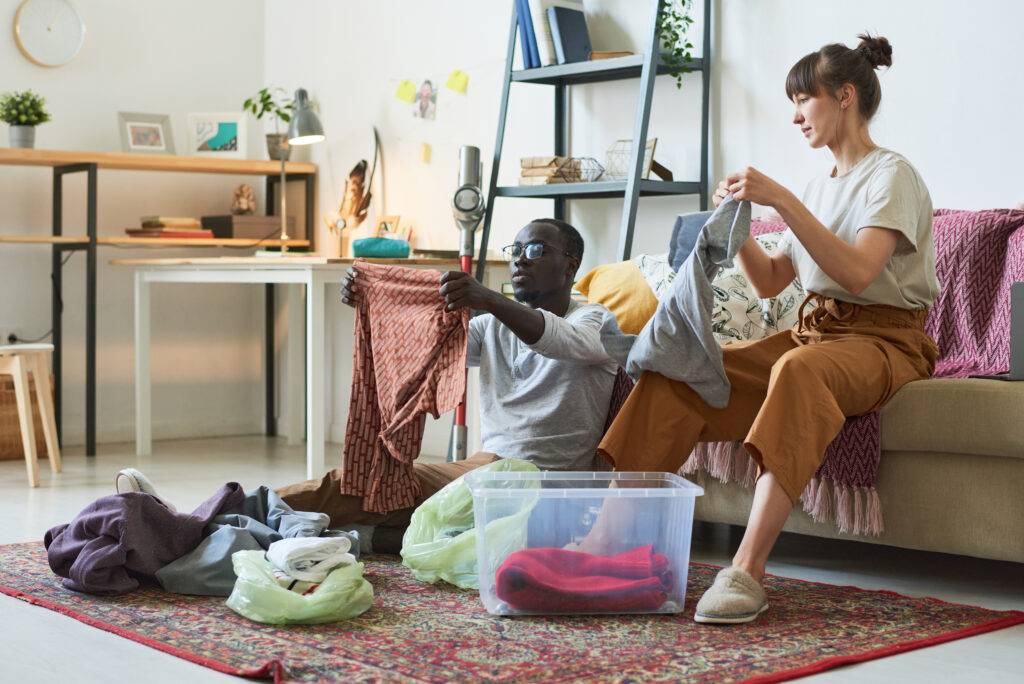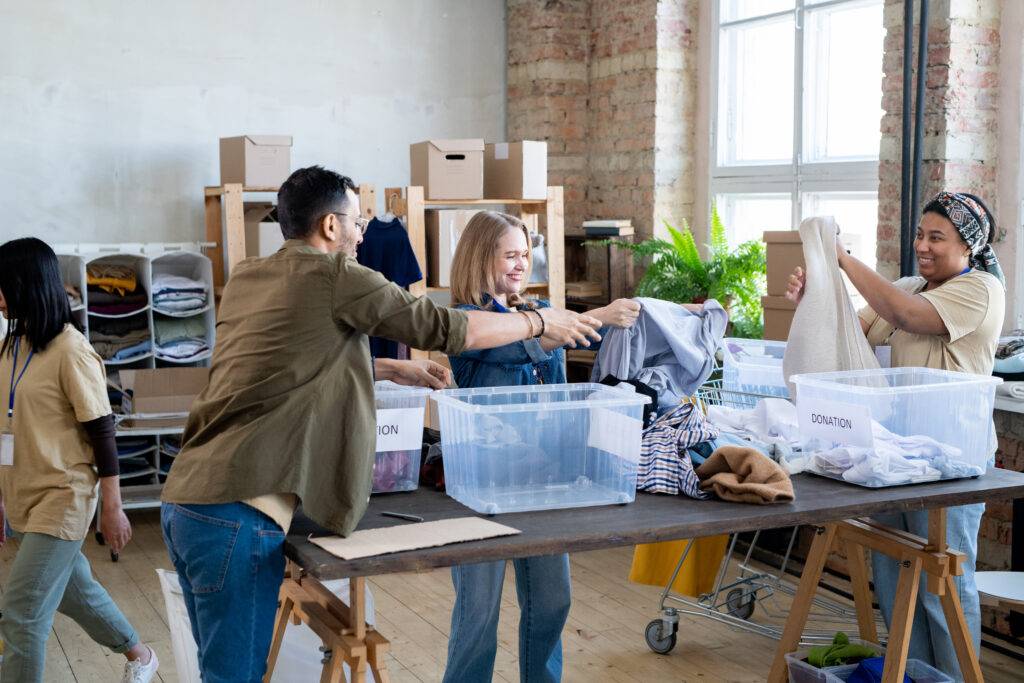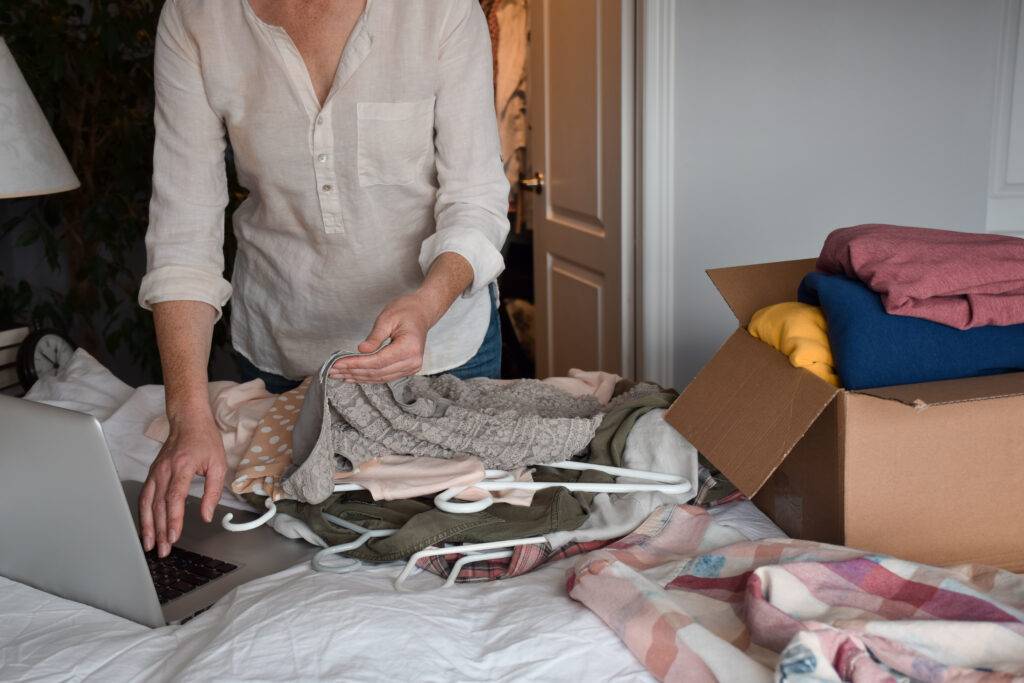Decluttering can be an overwhelming task. I’ve seen firsthand how a cluttered space can create stress, anxiety, and a sense of being stuck. When I walk into a new client’s home, I can often feel their tension. It’s not just about the physical clutter, it’s about the emotional burden that comes with it. To help you overcome this challenge, I’m sharing my ultimate decluttering checklist.
This guide will walk you through each step of the process, from getting started to maintaining a clutter-free space, so you can create a home that brings you joy and tranquility.
Decluttering Checklist

Here is my comprehensive checklist for decluttering your home. These steps are designed to help you take control of your space, one room at a time.
Step 1: Start with a Vision
Before you start decluttering, take a moment to visualize what you want your space to look like. This vision will be your guiding light throughout the process. Write down your goals and keep them somewhere visible. What do you hope to achieve? A clutter-free living room where you can entertain guests?
A clean kitchen where you can cook without chaos? A serene bedroom where you can rest? Whatever your vision, keep it in mind as you work through the checklist.
Step 2: Gather Your Supplies
To declutter effectively, you need the right tools. Here’s a list of supplies I recommend:
- Storage bins: For organizing items you want to keep.
- Garbage bags: For items to throw away.
- Donation boxes: For items to give away.
- Cleaning supplies: For cleaning as you go.
Having these supplies on hand will make the process smoother and prevent you from getting sidetracked.
Step 3: Create a Decluttering Strategy
Tackling an entire house at once can be daunting, so break it down into manageable sections. Start with the areas that cause you the most stress. I suggest decluttering room by room, focusing on one space at a time. This approach allows you to see progress quickly, which can be motivating. Here’s a simple strategy to follow:
- Daily spaces: Start with the kitchen, living room, and bathrooms. These are the areas you use most frequently, so getting them organized will have the biggest immediate impact.
- Storage areas: Next, move to closets, garages, and attics. These spaces often hold the most clutter and require a different approach.
- Bedrooms: Declutter your personal spaces last, as they often contain items with sentimental value and may require more emotional consideration.
Step 4: Declutter with the Four-Box Method

One of my favorite decluttering techniques is the Four-Box Method. It helps you make quick decisions about what to keep and what to discard. Here’s how it works:
- Keep: Items you use regularly or that bring you joy.
- Donate: Items in good condition that you no longer need.
- Discard: Items that are broken or unusable.
- Relocate: Items that belong in a different room or location.
Go through each room with these four boxes, sorting as you go. Be honest with yourself, if you haven’t used an item in over a year, it’s probably time to let it go. This method keeps you focused and prevents you from overthinking each decision.
Step 5: Organize What You Keep
Once you’ve sorted through the clutter, it’s time to organize the items you want to keep. Here are some tips to help you make the most of your space:
- Use vertical storage: Shelves and wall-mounted organizers can free up valuable floor space.
- Label everything: This makes it easy to find items later and helps maintain order.
- Create designated zones: Group similar items together to create functional areas within each room.
- Use transparent containers: Clear bins let you see what’s inside without having to open them, making it easier to stay organized.
Step 6: Clean as You Go
Decluttering is the perfect time to give your home a thorough cleaning. As you work through each room, wipe down surfaces, vacuum, and dust. This will make your newly organized space feel even more inviting. A clean space is also easier to maintain, which helps prevent clutter from returning.
Step 7: Maintain Your Decluttered Space

After you’ve finished decluttering, the key is to maintain your organized space. Here are some tips to keep clutter from returning:
- Set a cleaning schedule: Dedicate a few minutes each day to tidying up. This prevents clutter from building up over time.
- Use the “one in, one out” rule: For every new item you bring into your home, remove one that you no longer need. This helps prevent accumulation.
- Regularly declutter: Schedule quarterly decluttering sessions to keep things under control. This can be as simple as spending a day cleaning out closets or as involved as reorganizing entire rooms.
Why Declutter?
Before diving into the checklist, it’s crucial to understand why decluttering is so important. A cluttered home can affect your mental well-being, causing stress and disrupting your daily life. When you’re constantly searching for things, or your home feels disorganized, it can be exhausting. Clutter makes it difficult to relax and enjoy your surroundings. By decluttering, you’re not just tidying up, you’re creating a healthier environment where you can feel at ease.
Read more about top decluttering ideas
Conclusion
Decluttering can be a transformative experience. By following this checklist, you can take control of your space and create a home that brings you joy and relaxation. The key is to start small, stay consistent, and be patient with yourself. Remember, decluttering is a journey, not a sprint. As you work through the checklist, you’ll find that the effort is worth it. A clutter-free home is a more peaceful home, and you’ll be able to enjoy it without the stress and anxiety that clutter can bring.
How do I know when it’s time to declutter?
If you find yourself constantly searching for things, feeling stressed in your own home, or avoiding certain rooms, it’s time to declutter. Other signs include difficulty cleaning due to excess clutter, feeling overwhelmed by the amount of stuff you have, and a general sense of discomfort in your own space. If any of these sound familiar, it’s a good indication that you could benefit from a decluttering session.
What should I do with items that have sentimental value?
Sentimental items can be the hardest to declutter. The key is to prioritize the ones that genuinely bring you joy or hold significant memories. Consider displaying them in a way that you can appreciate, or repurpose them into something useful.
If you have too many sentimental items, keep a few select pieces and consider taking photos of the rest. This way, you can retain the memories without keeping unnecessary physical clutter.
How can I make decluttering a habit?
To make decluttering a habit, establish a routine. Dedicate a specific time each day or week to tidying up. Implement the “one in, one out” rule to prevent clutter from accumulating again. Additionally, schedule regular decluttering sessions every few months to keep your home in check. By staying consistent and mindful about what you bring into your home, you’ll find it easier to maintain a clutter-free space in the long run.

